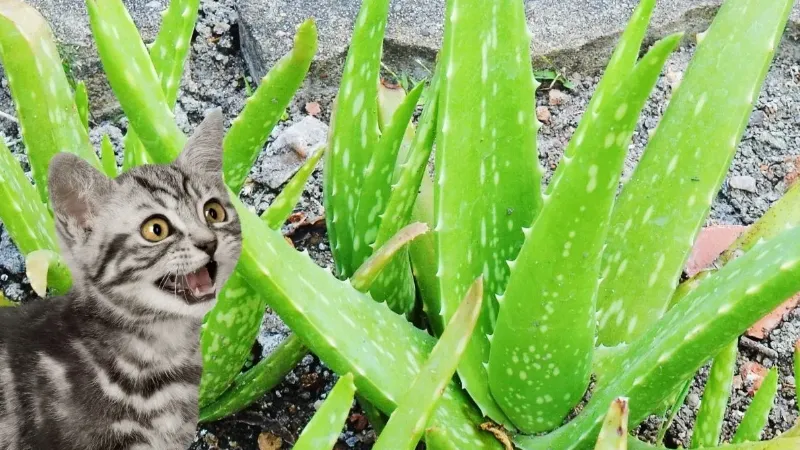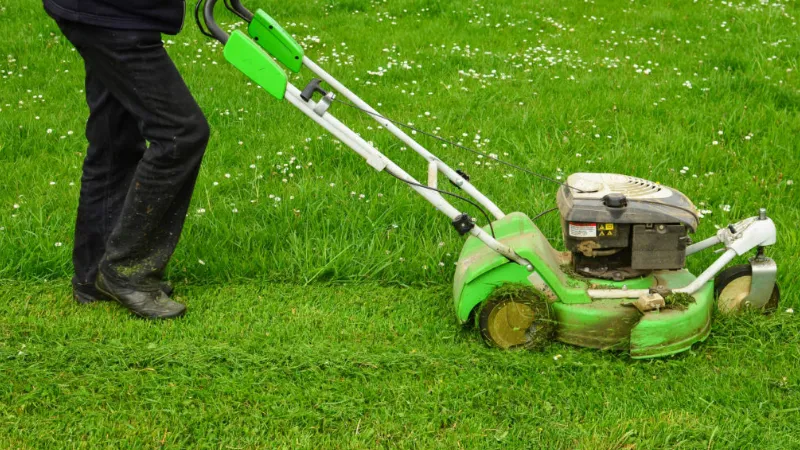Are aloe plants poisonous to cats? Knowing which plants to avoid is important if you’re an avid gardener and cat lover, especially if your feline companion enjoys chewing on things.
Aloe plants are only toxic to cats if they chew or eat a little of the plant. The latex in the leaves can give your cat diarrhea, vomiting, and lethargy, but cats rarely consume enough of the plant to cause more severe symptoms. You should prevent your cat from getting too close to aloes to be safe.
Please continue reading for more information.
Aloe Plant Basics
Aloe plants are succulent plants in the Aloe genus. Despite the fact that there are numerous aloe species, aloe vera is one of the most well-known.
These plants are indigenous to certain areas of Africa and the Indian Ocean. Consequently, they prefer warm weather.
Aloe plants can be kept indoors as houseplants and also be left outdoors in warm weather.
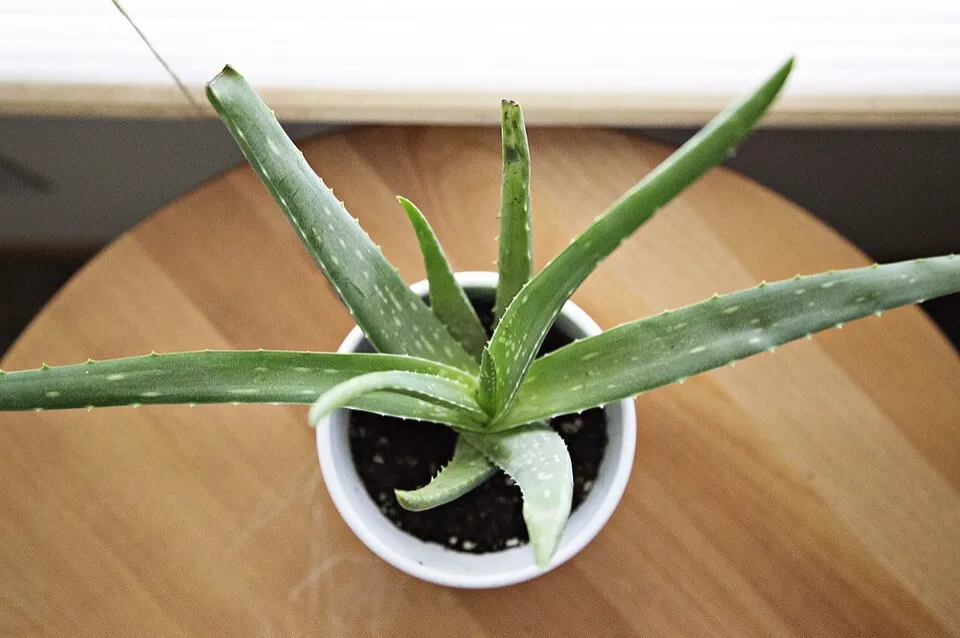
Why Would Your Cat Chew on Your Aloes?
Cats are well known for having a curious nature, and one way they show this curiosity is by nibbling on objects in their surroundings. Aloe leaves’ teeth or spikes may serve as a sufficient deterrent in some circumstances, but not always. Particularly if they are bored, cats can be quite persistent.
Here are some reasons cats chew on plants:
- boredom
- stress
- because they are lacking in a nutrient (this is a theory)
- to help ease an upset tummy (another theory)
- to help reduce intestinal parasite load (one more theory)
And occasionally they are just as easy to use as they are enjoyable to play with. Aloe is a common houseplant (how to care for aloe vera) but it may not be a good idea if you have cats.
If you have a cat, it’s best to avoid keeping aloes in a pot indoors. If you have aloes in your garden, you can always keep your cat indoors, but doing so defeats the purpose of having a pet in your home.
Many cat owners lament how frequently their cats destroy their indoor plants, including by chewing on them. To satisfy their need for greens and divert them from other houseplants, it is best to keep planters of pet grass indoors. This organic cat grass kit makes it easy to add it to your home.
Put the aloes out of the cat’s reach if you truly want to keep them indoors. Adding a few indoor hanging baskets may be the next safest alternative to banning aloes from your home altogether.
Cats frequently enjoy digging in the soil around indoor and outdoor plants, which puts them close to vegetation they might be tempted to chew. They won’t go near the base of your potted plants if you surround it with rocks, shells, and rough stones.
Aloes thrive outdoors in stony areas like rockeries where there isn’t much topsoil for a cat to dig. You can also surround your aloes with decorative stones, bits of broken tiles, brick, and other objects with rough surfaces to reduce their appeal to cats.
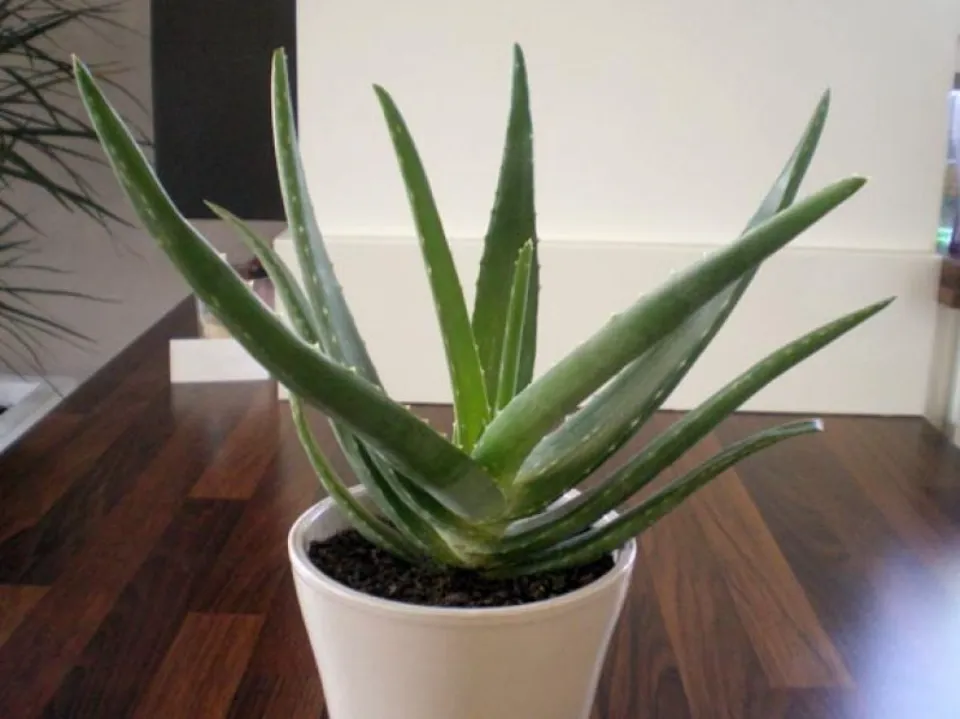
The Toxic Element of Aloe Vera Plants
Two things become apparent when you cut an aloe leaf open. First, the middle of the leaf has a clear gel running through it. Second, at the broken edges of the leaf surface, a white or yellow latex-like substance exudes from the leaf’s skin. This plant contains the toxic substance latex.
It contains an agent known as aloin, a toxin that has long been employed by people as a laxative. In large doses, all laxatives can be harmful to humans. Except when consumed in large quantities, the plant is not poisonous to cats or humans. Cats, on the other hand, are considerably smaller than humans, so it takes less of the plant for them to be harmed by it.
Both the gel and the latex are commonly used for various medical applications, but they contain different chemical components. More than 200 chemical components can be found in the whole leaf extract, which also includes plant parts like the gel and latex.
Symptoms from Ingesting Aloe Plants
There are many symptoms your cat might display if eating your plants. Extreme cases can include kidney failure in addition to stomach pain. A vet will know the clinical signs to look for and know exactly how to treat your cat for contact with poisonous plants.
If you think your cat may have consumed some of your aloe, call the vet right away or take her to an emergency after-hours clinic. It’s better to be safe than sorry when it comes to your feline friends, as pet owners are aware. Let’s look at some of these symptoms in more detail.
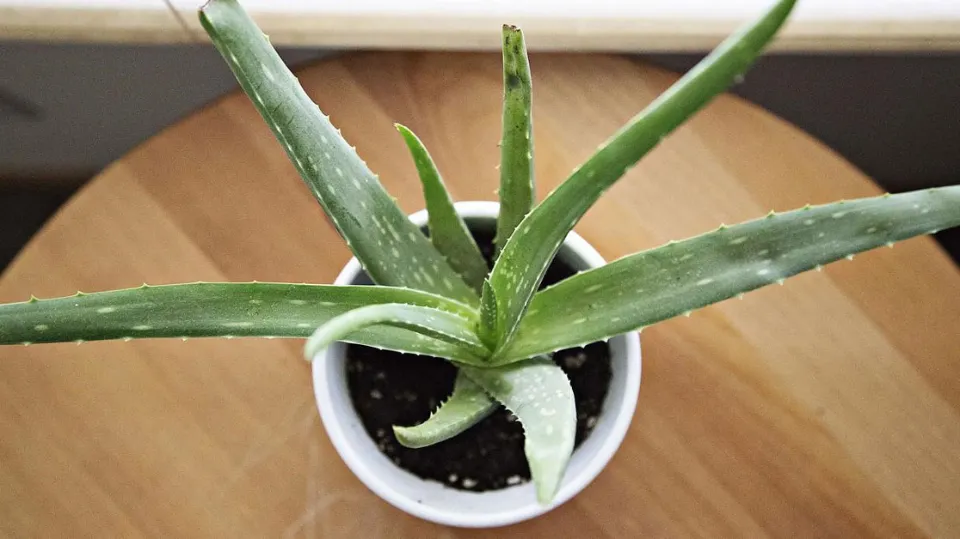
Will Aloe Vera Toxicity KILL My Cat?
The relief is that Aloe toxicity is mild, and no severe issues arise when consumed in small quantities, but again the severity depends on the consumption amounts.
We’re talking about a serious matter, so don’t panic. As it consumes the plant, your cat won’t perish. But if you doubt higher consumption, you must immediately seek medical help from a veterinarian.
Aloe poisoning does not instantly kill your cat, but it may leave the animal seriously ill and, if untreated, may cause causality.
Diagnosis of Aloe Vera Poisoning
Verify how much aloe vera your cat has consumed before taking any further action. It will be helpful when anticipating certain outcomes and making plans for them.
Please don’t panic and try to carry your cat’s details and previous health reports as a veterinarian asks them before diagnosing.
If you are already delayed in finding the ingestion, note down the symptoms and immediately seek veterinarian help.
If you see the event, don’t try to make it throw up or feed it anything without first talking to a doctor. Wait for authorized assistance instead, then give them information such as the amount consumed and the precise time it was consumed.
Don’t forget to bring the Aloe Vera sample your cat consumed to the veterinary office.
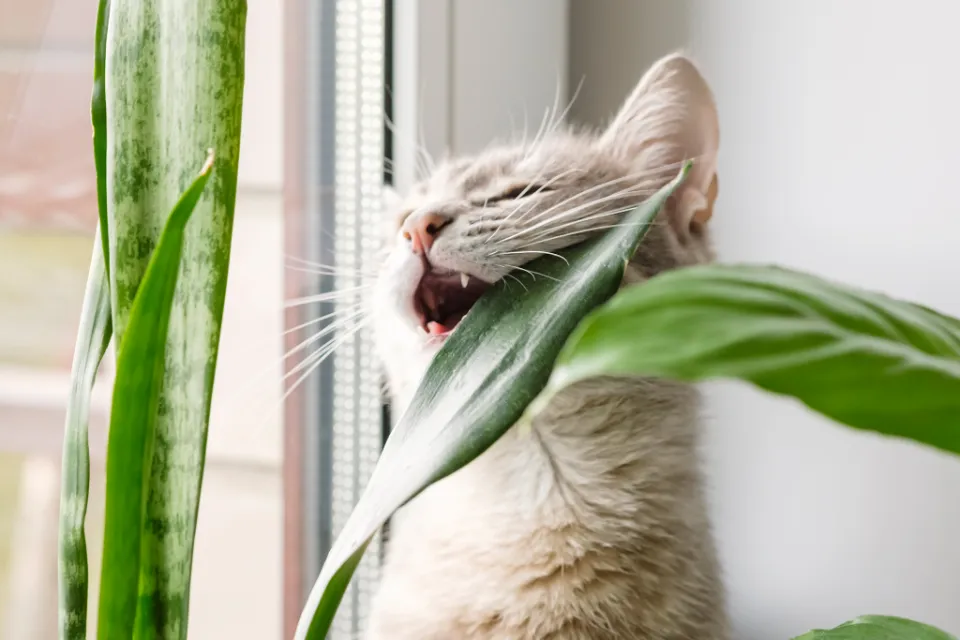
Recovery of An Aloe Poisoned Cat
In general, the side effect of Aloe poisoning in cats lasts for 24-48 hours from the time of consumption of the plant.
The first indication of aloe poisoning is diarrhea and vomiting. These signs are seen in 4-10 hours of intake.
After 8-12 hours, the cat becomes lethargic, loses appetite, and has a problem with muscle tremors.
In between 12-24 hours, cats may experience mild post-symptoms, which is quite normal, but most cats recover by this time.
High aloin intake can occasionally interfere with how normally functioning organs work; in these situations, the length of the recovery period depends on the medications the doctor has prescribed.
During this time of recovery, their bodies undergo a lot of changes, necessitating the provision of highly nourishing foods and the highest level of care.
See more:
How to Protect Your Cat from Aloe?
Keep your Aloe out of reach if your cat has a habit of nibbling on different house plants. An excellent choice is a hanging planter.
By giving your cat plenty of food, clean water, and amusing toys, you can also deter it from nibbling on your plants. It is less likely for a pet to chew out of boredom if it receives a lot of stimulation.
Linda Naeve, an Urban Agriculture Specialist at Iowa State University Extension, suggests offering cat-friendly plants to your feline instead:
Turfgrass and other plants can be replaced with cat grass, which is available at pet stores and garden centers. Common oats, Avena sativa, make up the majority of cat grass seed that is sold commercially. But, it may also be packaged as a blend of oats, wheat, and rye grass.
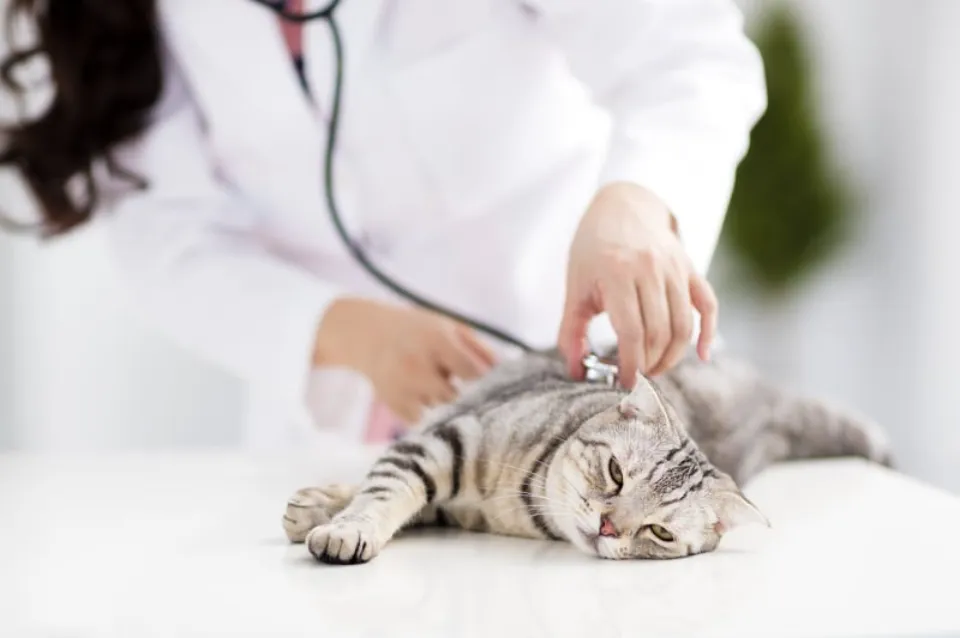
FAQs
What Part of Aloe is Toxic to Cats?
The latex can be problematic for your dog or cat even though the gel is non-toxic. Happily, the majority of aloe products you purchase, including those for hot spots, have had any toxic latex removed during processing, allowing you to use them safely.
How Much Aloe Vera Can I Give My Cat?
Natural laxative aloe vera can induce diarrhea in some animals, especially if given in excess or too soon. General maintenance dosage: 1 teaspoon of recommended Aloe Vera gel or juice product per 10 pounds of body weight daily.
How Do You Remove Poison from Aloe Vera Leaves?
Let the aloe leaf stand upright in a container or in your sink for about 10 minutes to let the yellow sap drain out. It is best to discard this sap, known as aloin, because even though it is non-toxic, it has a very bitter taste and could upset your stomach.
Are Aloe Plants Toxic to Humans?
In general, aloe gel is safe for consumption by people (remember those aloe beverages?). Other areas of the plant, however, need to be avoided.
A toxic layer of latex lies between the skin and flesh of an aloe leaf. Humans who consume it might experience nausea, vomiting, and diarrhea as a result of their gastrointestinal system.
If you suspect a child has eaten an aloe plant, keep a close eye on them and get in touch with a doctor if any symptoms appear.
Summary: Are Aloe Plants Toxic to Cats?
Your space can benefit from having aloe as a beautiful addition. While it’s a convenient home remedy for scrapes and burns, its effects on humans and their pets are very different.
Is aloe bad for cats? Take your cat to the vet right away if they exhibit any symptoms of aloe poisoning, such as vomiting, diarrhea, or loss of appetite.
You should be able to prevent an emergency trip as long as you are aware of the facts and practice safety with this plant.
Are cats poisoned by aloe? Yes, but there is no reason why an animal and plant cannot coexist peacefully.
If you have any questions, please leave a comment. My Prime Home tries to give you the best home improvement information. Don’t forget to share the post. Thank you for reading.
